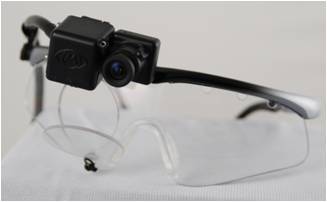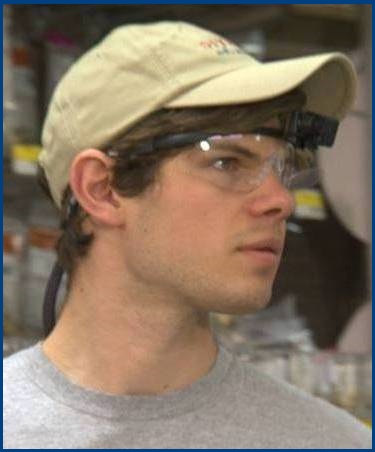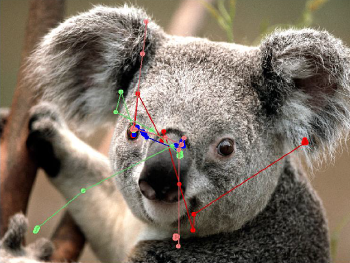ETMobile Eye Tracking System
 The ETMobile system is especially suited to applications that require unobtrusive head gear, and unconstrained movement of the participant, including untethered movement over large areas. Eye movement and point of gaze information can be collected at either 30 or 60 Hz update rates, during performance of natural tasks under variable light conditions.
The ETMobile system is especially suited to applications that require unobtrusive head gear, and unconstrained movement of the participant, including untethered movement over large areas. Eye movement and point of gaze information can be collected at either 30 or 60 Hz update rates, during performance of natural tasks under variable light conditions.
The system is designed to handle the increasingly diversified demands of eye tracking in a variety of applications including Sports, Kinesiology, Driving, Market Research, Reading, Safety & Training, Social Interaction, Neuroscience, Mobile Device Usability, and much more...
 The participant wears lightweight ETMobile glasses that fit comfortably with unoccluded periperal vision, and flexibility to fit all facial shapes and sizes. The glasses are connected to a small data recording/transmission unit (DTU) that can be easily carried by the participant on a belt loop, or worn as a small back or lumbar pack.
The participant wears lightweight ETMobile glasses that fit comfortably with unoccluded periperal vision, and flexibility to fit all facial shapes and sizes. The glasses are connected to a small data recording/transmission unit (DTU) that can be easily carried by the participant on a belt loop, or worn as a small back or lumbar pack.
 The data can be monitored and recorded using a real-time Wi-Fi connection to a laptop PC, or can be recorded locally by the DTU (unit carried by the subject) for later playback.
The data can be monitored and recorded using a real-time Wi-Fi connection to a laptop PC, or can be recorded locally by the DTU (unit carried by the subject) for later playback.
The ETMobile system can integrate with numerous commercially available position tracking systems to implement the Argus Science ET3Space function. ET3Space is used to find line of gaze with respect to real environment 3 Space coordinates, and point of gaze with respect to multiple physical surfaces in the environment.
One Eye Tracker for Multiple Applications
 The ETMobile glasses, combined with new Argus Science SceneMap (Scene Mapping) or StimTrac (Stimulus Tracking) data analysis technology and the ETAnalysis program, allows use of one eye tracker for multiple applications which, in the past, would have required different types of eye tracker systems.
The ETMobile glasses, combined with new Argus Science SceneMap (Scene Mapping) or StimTrac (Stimulus Tracking) data analysis technology and the ETAnalysis program, allows use of one eye tracker for multiple applications which, in the past, would have required different types of eye tracker systems.
The advantages of analyzing data collected by a desktop eyetracker, when the participant is seated in front of a display monitor, can now be realized with ETMobile eye tracking glasses by using the optional Argus Science StimTrac (Stimulus Tracking) feature.
For certain environments, the Argus Science SceneMap (Scene Camera Mapping) feature can be used to collect data that includes the participant's head location in space and point of gaze with respect to multiple objects in the environment without requiring a separate head tracking device.
Typical Application Solution
Features
Allows unconstrained and untethered movement over large areas.
Very light and unobtrusive head mounted optics built onto safety glasses frames.
Completely unobstructed field of view.
30 or 60 Hz data update rate.
Argus Science ET3Space feature, with external head tracker, to find line-of-gaze with respect to 3 dimensional environment coordinates, and point-of-gaze on multiple stationary surfaces.
Optional Argus Science StimTrac or SceneMap features to analyze gaze with respect to stationary surfaces, without use of an external head tracker.
Flexible and powerful data analysis with Argus Science ETAnalysis software.
Real-time network communication between ETMobile PC and external devices.